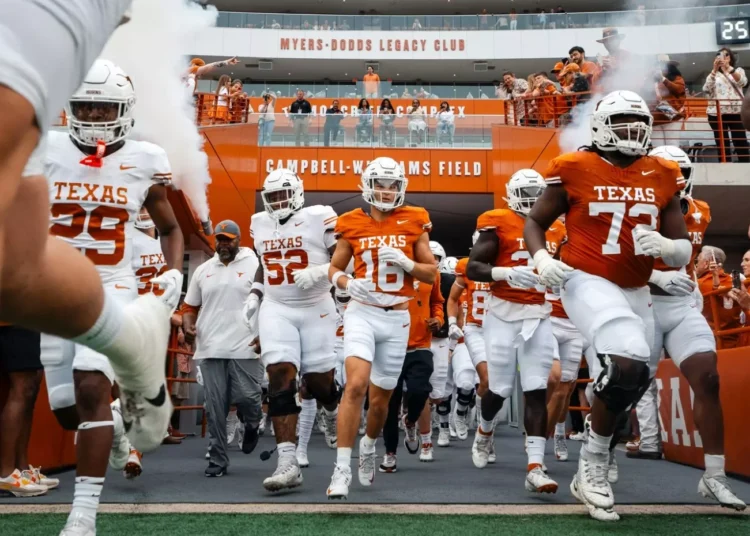The University of Texas Longhorns football program boasts a rich history intertwined with remarkable stories of military service. Several individuals have seamlessly transitioned from the battlefield to the football field, exemplifying leadership, resilience, and dedication.
Ahmard Hall: From Marine Sergeant to Team Captain
Ahmard Hall’s journey to the Longhorns is a testament to perseverance and ambition. Before enrolling at the University of Texas, Hall served as a Marine, with deployments to Afghanistan and Kosovo. His military tenure instilled in him a discipline and work ethic that would later define his football career.

Upon leaving active duty in 2003, Hall utilized the GI Bill to attend the University of Texas, where he walked onto the Longhorns football team. Despite starting as a walk-on, Hall’s relentless determination earned him a starting position by his senior year. His leadership qualities, honed in the military, were evident on the field, leading to his recognition as the Big 12 Male Sportsperson of the Year in 2005. This accolade honored his sportsmanship and commitment to community service, including organizing care package drives for veterans. Reflecting on his military experience, Hall credited it with enhancing his mental toughness, stating, “I felt like after I served in the military I could accomplish anything.”
Nate Boyer: Green Beret Turned Long Snapper
Nate Boyer’s path to the Longhorns is both unconventional and inspiring. Before his football career, Boyer engaged in humanitarian work in the Darfur region of Sudan and coached autistic children. Compelled to serve, he joined the U.S. Army Special Forces, becoming a Green Beret and earning a Bronze Star for his service.
After six years of active duty, Boyer transitioned to the National Guard and sought new challenges. Despite never having played organized football, he walked onto the Texas football team at the age of 31. His adaptability and resilience led him to the role of long snapper, where he quickly excelled. Boyer’s unique background brought a profound perspective to the team. Former Texas head coach Mack Brown remarked, “He epitomizes everything you want in a student-athlete.”
Bobby Wuensch: A Legacy Remembered
Bobby Wuensch, a celebrated offensive tackle for the Longhorns, played a pivotal role in Texas’ national championship victories in 1969 and 1970. Known for his formidable performance, Wuensch contributed to record-breaking performances and a 30-game win streak. He was a two-time All-American and part of the Texas Sports Hall of Fame. Wuensch’s career was cut short by injury, leading him to retire and join his family business. His enduring legacy is remembered by friends, family, and fans.
The Texas-Texas A&M Rivalry: A Battle Beyond the Gridiron
The rivalry between the University of Texas and Texas A&M University is one of the most storied in college football, characterized by intense competition and deep-seated traditions. This rivalry, often referred to as the “Lone Star Showdown,” has seen numerous memorable moments that have left an indelible mark on the history of both programs.
After a hiatus following Texas A&M’s move to the Southeastern Conference (SEC) in 2012, the rivalry was reignited with Texas’ recent entry into the SEC. The most anticipated college football game returned as Texas A&M faced the University of Texas in College Station, competing for a spot in the SEC championship and rekindling their historic rivalry. This match gained significance due to the teams’ annual Thanksgiving clashes that ended when A&M joined the SEC in 2012, with UT joining the conference recently. Texas holds the record with 76 wins to A&M’s 37, though they are close in College Station.
The University of Texas Longhorns football program’s history is enriched by individuals who have demonstrated exceptional courage, leadership, and dedication both on the field and in military service. Figures like Ahmard Hall and Nate Boyer exemplify the profound connection between athletic excellence and military valor. Their stories, along with the enduring rivalries and traditions, contribute to a legacy that continues to inspire future generations.














